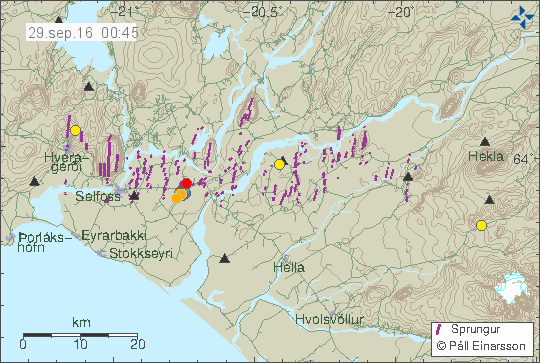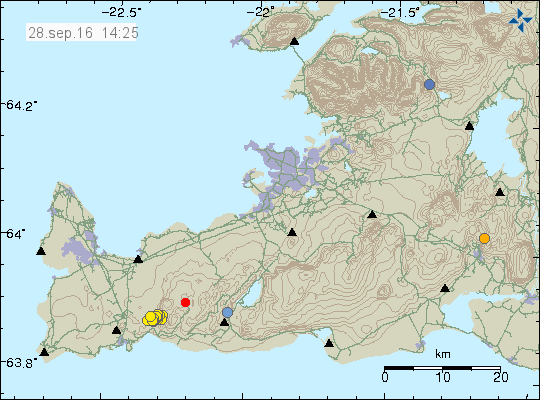This is going to be a short article, as the current situation is constantly changing.
Earthquake swarm started around 03:00 UTC (29-September-2016) in Katla volcano, this earthquake swarm has been heavy due to high number of earthquakes, when this is written around 88 earthquakes have been recorded in Katla volcano. This number is going to change as the earthquake activity continues.
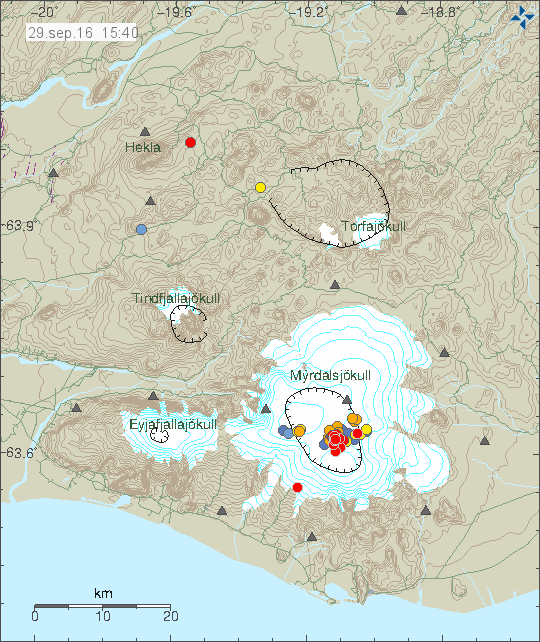
The earthquake activity in Katla volcano. Copyright of this image belongs to Icelandic Met Office.
According to a statement that Icelandic Met Office issued the conductivity in glacier rivers from Katla is higher than normally during this time of year. At current it is 190uS and according to the Icelandic Met Office this is not normal during this time of the year. At the present no harmonic tremor has appeared, if it appears it is going to be clear on the SIL stations around Katla and maybe good distance away from the volcano. As it is going to override any background noise that might be happening (wind, noise, traffic).
This article is going to be updated as I learn more.
Update at 19:00 UTC
The earthquake activity has continued today as before, there have been small drops in activity for up to a hour, after that the earthquake activity continues. Currently (when this is written) there is a low in the earthquake activity. Largest earthquake was at 16:28 UTC and had the magnitude of 3,0. Other earthquakes have been smaller in magnitude.
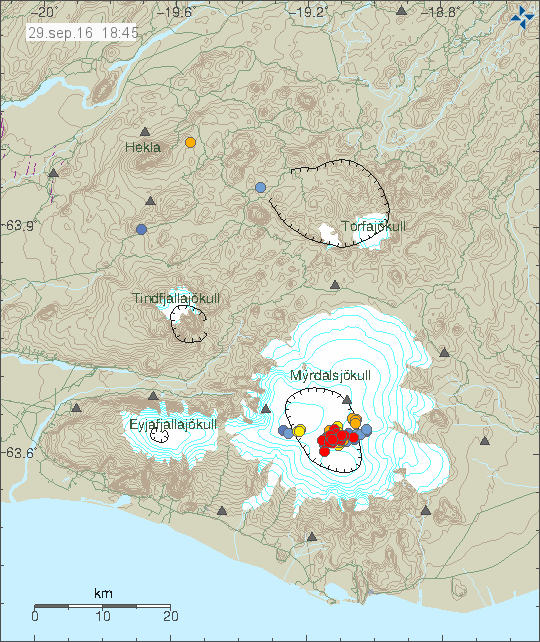
The earthquake activity at 18:45 UTC. Copyright of this image belongs to Icelandic Met Office.
Update on earthquake area location
Most of the earthquake activity today (29-September-2016) has been taking place north of cauldron 16 (see map). This makes it less likely to be connected to hydrothermal area and changes in that type of area. Since hot-springs create the cauldron seen in the Mýrdalsjökull glacier, the heat melts the bottom of the glacier and creating glacier outburst once in a while. It does appear that the earthquake activity has extended it self into cauldrons 10 and 11 and maybe cauldron 16, but I’m not sure on that detail currently.
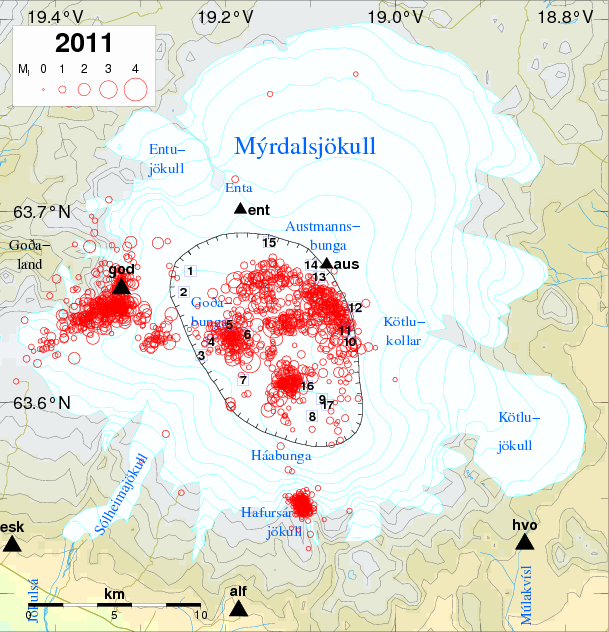
Earthquake activity in Katla after the year 2011. Cauldrons are marked with numbers and location on this map. Copyright of this map belongs to Icelandic Met Office. Source link.
Article updated at 16:05 UTC. Time corrections on when this activity started.
Article updated at 19:00 UTC. Updated added.
Article updated at 19:47 UTC. Map added from 2011.


